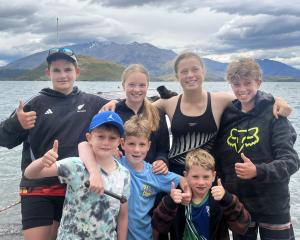You stumble across a stunningly gorgeous spot in New Zealand’s great outdoors. Do you broadcast it on social media and risk a tourist invasion, or do you keep it a secret just for yourself and, maybe, a select few? Mark Price explores a problem of the modern age.
The tourism boom and the rise of social media is spawning a new way of thinking among New Zealanders who like to go bush.
Instead of promoting their favourite scenic landscapes, some New Zealanders are doing their best to keep them secret.
One is Wanaka landscape architect Anne Steven.
"I’m very loathe to publicise where I go now— the special places ... because people just latch on to it and suddenly everybody’s there."

But she has become more careful about whom she shares her knowledge with and gives an example of a "stunning view" she knows of that is still some distance from the beaten track.
"I’m not going to tell anyone about it except for close friends and family.
"It stands to get trampled to death."
Federated Mountain Clubs president Peter Wilson is another who has places he keeps secret.
"There are places I know, particularly in the high country, where I don’t tell people to go.
"I don’t put photos of my really special places on Facebook and on social media.
"There are a lot of places I go in the high country that have no visitors at all and I sort of want to keep it that way."
He understood why others felt the same way.
"There’s always been a debate about it and I just think the debate’s a wee bit louder at the moment."
In the Wanaka region, that debate has been driven by the overcrowding of several local landscape features including Roys Peak, just west of Wanaka, which was climbed by 84,000 people in the 2017-18 year.

"Digital influencers" were encouraged to visit Wanaka ... and a flood of tourists has followed in their footsteps to the point where the Department of Conservation was forced to build a new car park and install a toilet on the peak.
In an effort to spread the load, Lake Wanaka Tourism has recently created a map showing 24 other "photogenic locations".
General manager James Helmore says the locations are deliberately spread around to reflect the broader region.
One of the "influencers" who popularised Roys Peak was American Chris Burkard (32) who has almost three million followers.
In a recent post, he acknowledged criticism had come his way but concluded the access track was in better shape now than when he first publicised it.
"Although the secret is out,I think it is better to havethese places appreciatedby many, rather than a select few," he posted.
Giving away the location of "secret" places in Australia has caused grief for influencer Madeline Zotter (22) this week.
She was reported by the The New Zealand Herald as being upset over online abuse.
"This weekend alone," she said, "I received four abusive, unkind or negative messages because I wrote the location of a place.
"I am human, your words hurt and I spent a good part of my Easter — and this morning — crying.
"I have been called words such as a brat, told I am the reason for national parks being trashed and was even told to go back and stick my head under the water a little bit longer, purely because I listed the name of the place that others believe should be kept a secret."
Both Mr Wilson and Ms Steven note the South Island has the advantage of a rugged landscape to protect many of it’s scenic secrets.
"It takes a bit of effort to get to some of the really special places that we like," Mr Wilson said this week.
"We’re largely protected there."
He believes the "front country" — anything that takes less than a day’s walk to reach — is most at risk from over use.
"If it’s a remote track and you’ve got to cross a river, and it’s going to take two hard days to get in there, I’m not too worried. Publish all the photos you like."
However, the Walking Access Commission’s newly released South Island High Country Access Report notes a trend that has become evident as popular areas have become overcrowded.
"This forces people who want an even quieter experience to push further afield, visiting areas that previously might have only been used by those wanting solitary experiences.
"These people are then forced to go even further into the back country, and so on.
"This displacement runs through three or four tiers, and means that some of our pristine wilderness areas are seeing increased numbers (even off a very small base) that they simply aren’t used to coping with."
Mr Wilson believes there is a need for a more strategic approach around the marketing of New Zealand’s scenic attractions.
"I don’t think you would get any disagreement from the tourism industry on that.
"It’s just that we don’t have a mechanism to be strategic.
"There’s no plan. There’s not even an agency to do the plan."













